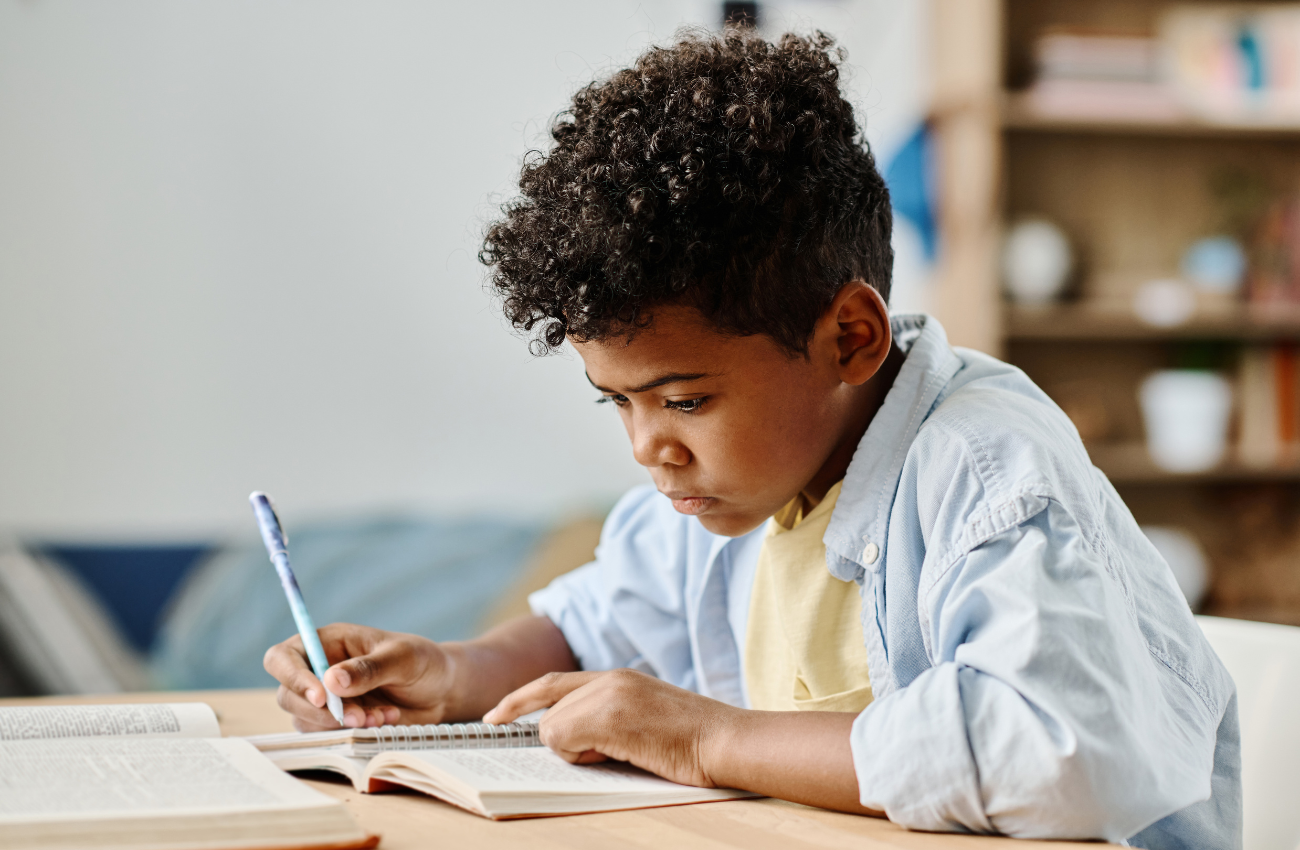Creating an At-Home Work Space for Your Family
Defy the confines of space with our tips on finding a spot to get work done in your home!

Creating a functional and organized desk space for your child or teenager is essential for their focus and productivity, whether for homework, creative projects, or hobbies. Even in a small bedroom, you can design a workspace that promotes concentration without breaking the bank. Busy Philadelphia parents need smart ways to maximize small spaces, and we can help! We’ve got budget-friendly desk setup ideas, and age-specific tips to help keep your child’s work space organized and clutter-free. For now, anyway! Find even more home organizing and DIY in our Home Improvement Guide!
Identify and Maximize Small Spaces
For some city-dwellers, indoor space is a hot commodity. You may think you’ve used up all the space you have, but it’s easy to get creative. In a small bedroom, it’s all about smart space utilization. Consider vertical storage solutions to free up floor space and keep the desk area clear of clutter. Shelves above the desk, wall-mounted organizers, or pegboards can hold supplies and books, leaving the desktop open for work. You may even discover there is space at the end of a hallway that can fit a table, and then use vertical storage above that!
Space-Saving Hacks:
- Use multi-functional furniture. A desk with built-in shelves or drawers provides extra storage.
- Install hooks on the wall or side of the desk for hanging backpacks, headphones, or cables.
- Use rolling carts or bins that can slide under the desk when not in use.
Equipment Matters
When choosing a desk, opt for something that fits the size of the room but still provides enough surface area for school supplies, books, or a laptop. For a small space, consider compact desks, corner desks, or even wall-mounted options that fold away when not in use. A simple table with legs that screw on will do the job and also offer some flexibility in their size. Make sure the chair is ergonomic, especially for teenagers who may spend longer hours studying. Look for chairs with adjustable heights so they can be used as your child grows.
Budget Tip: Look for secondhand desks and chairs at thrift stores, garage sales, or online marketplaces. A fresh coat of paint or some simple DIY upgrades can transform an old desk into a functional and stylish workspace. Also consider places like IKEA for inexpensive but new options.
Affordable Organization Solutions
Organization is key to a productive workspace. Encourage kids to keep things tidy with the help of affordable storage solutions. Look for desk organizers, pencil holders, or small baskets that fit their needs. Also, don’t go all out with buying every school supply at Staples. Keeping it simple helps keep the overwhelming feelings at bay both when it comes to getting the work done AND cleaning up.
Budget-Friendly Options:
- Repurpose household items like jars, cans, or small boxes for storing pens, markers, and other supplies.
- Use a drawer divider to create separate spaces for school supplies, notebooks, and art materials.
- DIY cork boards or magnetic boards can be used to pin up schedules, reminders, or notes.
Keep the Space Functional and Fun
Finally, remember that this space should reflect your child or teen’s personality. While it needs to be functional, adding elements of fun can make them more inclined to spend time there. Allow them to pick a theme, choose accessories, or add personal touches like framed photos, a plant, or a favorite artwork.
Budget Tip:
Decorating doesn’t have to be expensive. DIY projects like painting old furniture, creating custom wall art, or making a fun desk mat can add personality without the cost.
For Young Children (Ages 5-10):
At this age, kids need simple, easy-to-reach storage. Label bins or drawers for specific items like crayons, notebooks, or toys to help them stay organized. Keep the desk minimal to avoid distractions and offer a fun element like a brightly colored lamp or a favorite character’s desk mat.
Pro Tip:
Use pictures instead of words on labels for younger kids, so they can easily find and put away their things.
For Pre-Teens (Ages 11-13):
Pre-teens often start needing more space for school assignments and hobbies. Provide stackable trays for papers, a calendar to track assignments, and a corkboard or whiteboard for notes and ideas. Introduce digital tools like a tablet stand or docking station to keep devices organized and ready for use.
Pro Tip:
Encourage pre-teens to personalize their space with their favorite colors or posters, which can help them feel more connected to their study area.
For Teenagers (Ages 14+):
Teens typically require more sophisticated organization as their workload increases. Invest in a good desk lamp, and consider a charging station for multiple devices. They may appreciate a minimalist workspace, so provide hidden storage options like drawers or under-desk baskets to keep clutter out of sight.
Pro Tip:
Encourage them to develop their own system for organizing assignments and study materials, whether through apps, planners, or sticky notes on a bulletin board.
A well-organized, budget-friendly desk space in your child’s or teenager’s room can have a significant impact on their ability to focus and stay organized. By maximizing space, using affordable solutions, and tailoring the setup to their age and needs, you can create a workspace that grows with them, helping them succeed academically while expressing their individuality.



NO COMMENTS